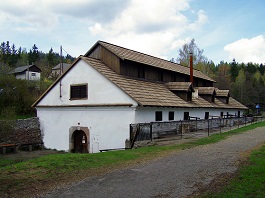
Water hammer in Dobřív awaits reconstruction thanks to EU funding
 |
If everything goes according to plan, reconstruction could begin as early as this year. The proposed repair aims to enhance the hammer, which is considered the most significant monument of its kind in the Czech Republic. While the hammer is operational, its machines and drives are already in unsatisfactory technical condition. The reconstruction aims to preserve their functionality. For instance, the electrical installation, which urgently needs repair, is from the mid-20th century. "A complete reconstruction is necessary, especially the revitalization of old circuits, equipment, and the restoration of the hammer itself, as it hasn't been touched for years," said Svobodová.
An important part of the planned project is also improving visitor comfort. "Visitors had no place to take shelter from bad weather; there were no restrooms," said Svobodová. Therefore, the region wants to build new facilities. However, since the small building, which will include a ticket office among other things, is not located on the plot of the national cultural monument, the construction does not qualify as eligible costs for the grant, and the region will pay for it from its own funds. Exact costs will be known after the tender process.
About six years ago, the hammer completed a major renovation of the water supply. With costs of about eleven million, a grant also helped at that time. Years of silt buildup caused the water in the supply to stagnate, and the technical equipment of the hammer was out of order. It was therefore necessary to completely dredge the approximately 900-meter-long supply and reinforce the banks.
Iron was produced in Dobřív from the early 14th century until the mid-20th century. The current brick building of the hammer was constructed in the early 19th century on the site of older wooden hammers. The rich machinery comes from the 19th century, from 1901, and from later periods. Last year, about 7,125 people visited the hammer, which is open five days a week from April to October; a year earlier, there were 7,923 tourists. A key event for attendance is the May Hammer Day, when nearly half of all visitors come to the hammer. Last year, 2,346 people attended, while in 2015 there were 3,138 visitors.
The English translation is powered by AI tool. Switch to Czech to view the original text source.
0 comments
add comment












